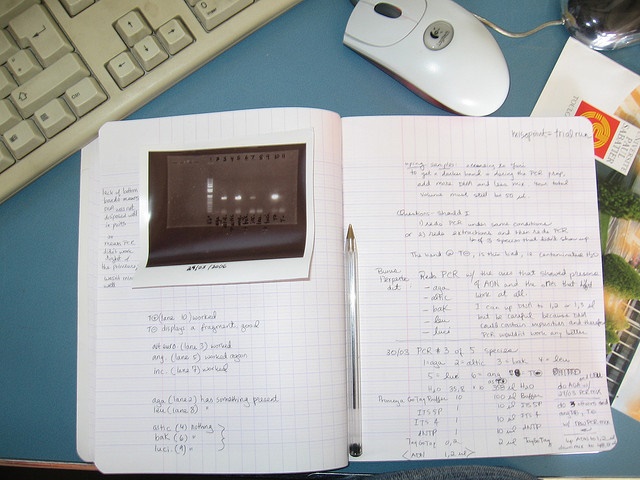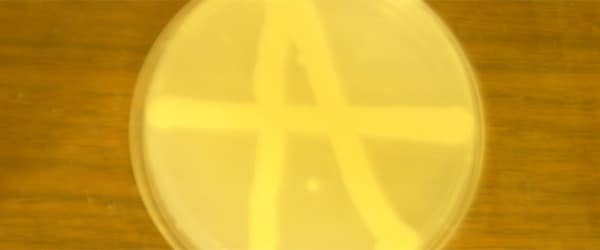In any experimental procedure, getting the controls right can save you a lot of work when things go wrong by allowing you to troubleshoot the source of the problem. DNA ligation is no different. In this article, we explain how to set up a ligation reaction with a complete set of controls, and use them to troubleshoot the cause of your ligation problems.
First a bit of DNA ligation background…
Ligation reactions fall into two categories, depending whether you are trying to join blunt or sticky DNA. Although the set-up is slightly different, the controls are basically the same for both types of reaction. In this article, we will focus on ligating a single insert into a vector.

- 50 ng vector
- 10 ng insert
- 1 microliters 10x ligase buffer
- 1 microliters DNA ligase
- water to 10 microliters
Adding a molar excess of insert can increase the chances of ligation, depending on the insert size, so it is often advisable to try a few vector:insert ratios. You can get more info on how ligation works here.
After ligation, competent E.coli is transformed with the the reaction mix. The fact that E.coli can be efficiently transformed by circular, but not linear, DNA is the basis for determining whether a ligation has been successful. The number of colonies obtained from transformation with covalently-closed, circular DNA depends on the competency of the cells and the amount of DNA present. Assuming we use the same competent cell prep for our ligation and controls, the number of colonies formed will be dependent on the amount covalently-closed DNA we have in each reaction (i.e. how successful the ligation has been).
And now onto the controls. To orientate you, below is a summary of the controls we will focus on:

DNA ligation troubleshooting Controls 1 and 2: Vector background
The vector preparation is a crucial part of the cloning procedure. If even a small amount of undigested vector carries through into the ligation, this will be transformed efficiently and will produce colonies. Colonies harboring non-insert-containing vector are called “background” colonies. More information on preparing vectors to reduce background colonies can be found here.
Another source of background is re-ligation of the vector. If the linear vector has compatible ends (e.g. blunt ends, or compatible sticky ends), then the ligase will efficiently join them to create circular, transformable DNA which will result in background colonies. A phosphatase treatment will reduce the possibility of re-ligation and reduce background, but it is often not perfect.
Whatever the source, it is vitally important to know how much background there is in a ligation reaction. To determine the amount of background, a parallel ligation reaction should be set up, with the insert replaced by water. This is control 1. Any colonies formed from transformation of this control will be the result of undigested or re-ligated vector, and subtracting the number of colonies formed from this control from the number of colonies formed from the ligation will give an idea of whether the ligation reaction has been successful. The ideal scenario is that there are few or no colonies on the control plate and tens, hundreds, or thousands of colonies on the ligation plate.
If your ligations are going well, control 1 is sufficient. However, if you are experiencing problems, the controls described below will help you pinpoint the source. Control 2 is similar to control 1, but without the ligase. Colonies formed from transformation of control 2 can only be the result of undigested vector, not vector re-ligation, since there is no ligase present. If you are obtaining a high number of background colonies, comparing controls 1 and 2 will allow you to determine whether the problem is due to undigested vector or vector re-ligation.
DNA ligation Troubleshooting controls 3 and 4: No colonies!?
The other side of the coin as that you get very few, or no, colonies. This could be because of issues with the competent cells or transformation procedure, use of the wrong antibiotic, or problems with the ligation reaction, such as poor ligase activity. The remaining controls allow you to distinguish between these possibilities.
Control 3 uses a known amount (about 0.1 ng works well) of the undigested parent vector. If transformation of E.coli with the undigested parent vector leads to no colonies on the plate, the problem is either in the transformation procedure, the competent cells, or antibiotic selection. Thus, the next step would be to try new cells, or review your transformation procedures.
On the other hand, if the transformation is a success, you can calculate the competency of the cells by counting the number of colonies obtained from the transformation. Realistically, the minimum competency of cells for cloning should be 1×10^6 colony forming units (CFU) per microgram of DNA. If your cells are below this, this is likely to be the problem and you should re-do the transformation with a fresh batch of competent cells.
For control 4, you need to prepare ahead. Take a reasonable amount (1 microgram) of any vector, digest with a single enzyme, then run on a gel, and isolate the band. This can now be used to test whether your ligase is working properly. Run a ligation reaction with this vector plus and minus ligase, then transform your competent cells. Compare the number of colonies on the two plates. If the ligase-containing reaction has significantly more colonies (at least 5-10x) than the ligase minus plate, then the ligase is likely working. If not, the ligase may be a problem. Beware with this control though – the problem could still be in your vector prep! The best approach is to make up a large batch of the digested vector then validate it with fresh ligase. When you know the vector prep is good you can then use it to check future ligase batches.
While they can be cumbersome and time-consuming, performing the correct controls for your transformation experiment can help you easily and quickly discern any issues you may encounter.
Republished June 2019.







